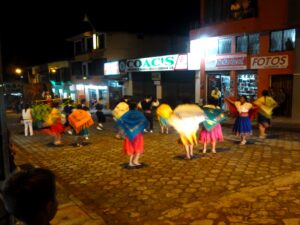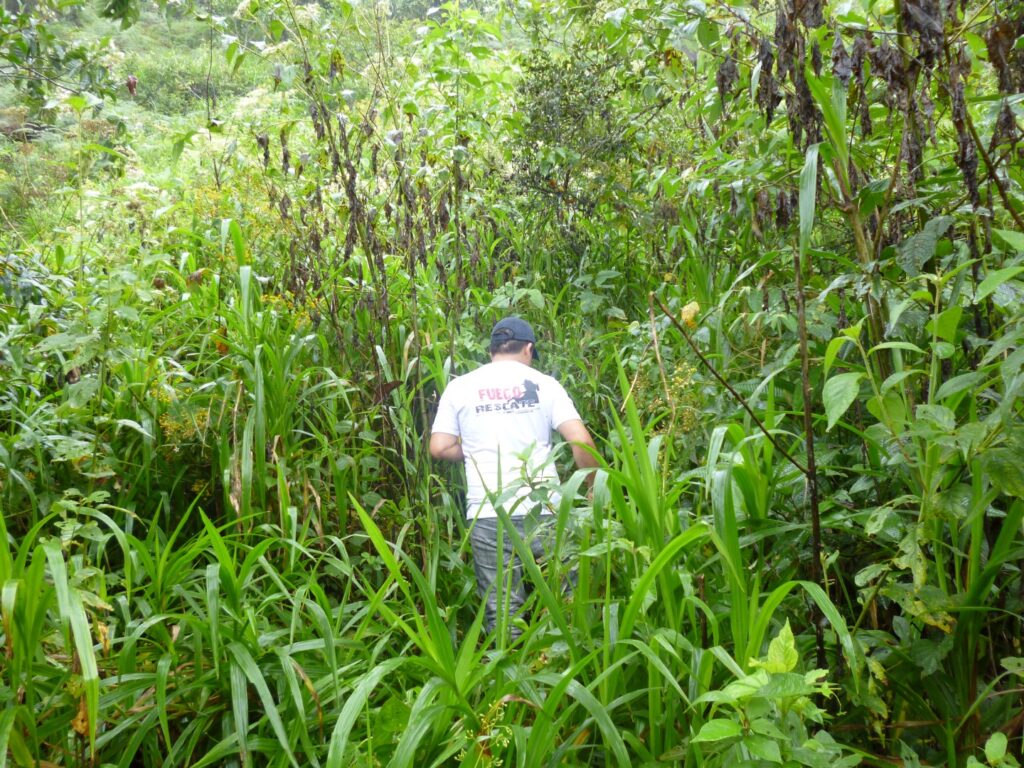When it comes to finding remarkable ruins in the midst of breathtakingly primordial surroundings, with the emphasis on finding, Machu Pichu’s got nothin’ on these guys. I know, I know. Machu Pichu is the glory of the Incas and gives you a sensation of walking through a lost castle in the sky. But the problem is… there’s not much adventure finding it anymore. It’s over-touristed, over-photographed, and over-documented. It has been so demystified that the real thing is hard to disconnect from the postcard.
Discovering your own "Macchu Picchu": The Cañari Trail
If you love ancient civilizations and their architectural remains, and you love even more being one of the few to discover them, get off the tourist trail and take the bus to the enchantment of Ecuador’s southern cloud forests, the Cañari Trail.
The Cañaris pre-dated the Incas as well as fought them. And while it is true that the Incas eventually defeated the Cañaris in battle, a history ensued of insurgency, assimilation, and various shades of conflict and cooperation between the two civilizations. What’s more important is that the Cañaris are still around today in the southern highlands of Ecuador, although in much fewer numbers, donning their distinctly noticeable thick-brimmed white sombreros and black ponchos, and thus providing some living continuity between the ancient and the present.
You can even visit the more well-known Cañari ruins of Pumapungo right inside the city of Cuenca, and Ingapirca not too far away from Cuenca. These, too, are visited by many tourists and don’t involve too much effort or adventure to find. In addition, the story of these ruins is more mixed in with that of the Incas, so you might get yourself into arguments about whether they are truly Cañari or not.
How did I get to Indiana Jones's least-known paradise?
However, always preferring to get into the ‘backroom’ where all the real stuff is hiding underneath a film of dust, I decided to take a bus from Quito down to the Morona-Santiago province where the real Cañari treasure troves are, veiled in the vines in the hillsides between Macas and Gualaquiza. You can get there directly (just click on the link in the previous sentence), but I decided to get there in shorter segments, so I stopped to rest in the backpacker’s command and control center of Ecuador, Baños. If you are starting your journey in Guayaquil, there is also a good variety of bus options throughout the day and night.
In Baños I can vouch for a variety of hot springs, cafés, massage salons, and affordable hostels that are invigorating before heading out in any direction for hikes and adventures.
Going deeper into the Ecuadorian jungle
Going east from Baños to Puyo, I started seeing the sierra intermingling with the jungle in form of rugged but misty valleys, and then from Puyo south to Macas, the landscape turned into lush rolling hills, thick with tall grass upon red earth, but more pastured than dense and dark like we may think of a jungle. There were a million shades of green this wetter and cooler time of year in August, with flashes of wild magenta bougainvillea popping up like ribbons spilling over a gift box.
People on the bus love to be amateur tour guides, and most are from the area you’re traveling through. Such was the case with my seat companion, who explained to me that we were entering the world of the Shuar communities, the famed former head hunters of Ecuador. He told me not to worry; they only hunt feet now, laughing hysterically at his own joke!
Rolling into Macas, the hillsides were embellished with wild orchids and the city itself was blessed with tons of light and a friendly almost giddy energy. Being the largest city in the region, it is common to get guides and information here. However, except for the ruins of Las Tolitas, I knew I was not quite in the epicenter I was looking for farther south. So for me, Macas was a good place for the second day of rest and rejuvenation; and taking in the fresh breezes overlooking the Río Upano river valley from a mirador behind the cathedral.
I was glad I trusted my instincts!
Always follow your instincts... Always!
Gualaquiza, a half-day ride further south from Macas or an overnight ride from Puyo, is set upon a gentle slope with a generous variety of hostels to choose from and hardly any tourists to compete with. It is also the best base camp for an amazing number of ventures of different types and abilities and lengths.
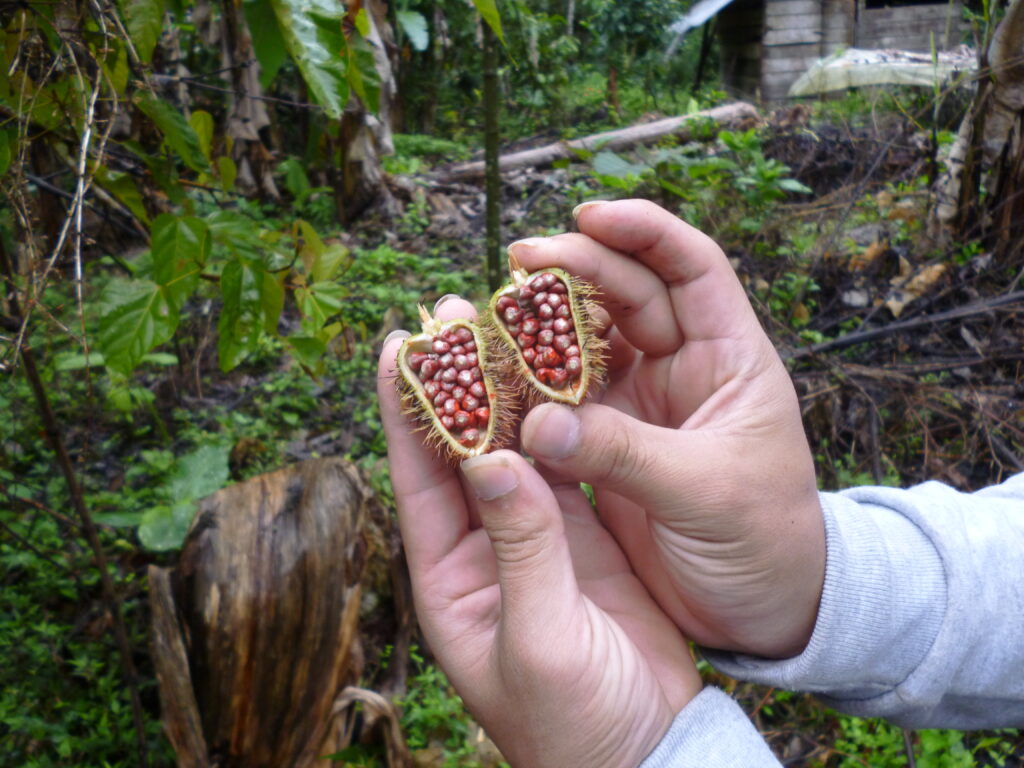
Since I came in the middle of the week in the middle of the low season, I had to put a little effort than usual as far as organizing an itinerary and finding a guide. The information office in Plaza Cívica was closed, but a simple phone call was all it took and they were there in no time to open up the office, which co-houses a small museum with interesting artifacts.
Because the Cañari sites are up on the mountainsides around Gualaquiza, tucked behind very rural communities or in some cases on private land, taking the buses there solo would do nothing but leave me stranded. So it was definitely necessary to contract a guide while in Gualaquiza, and the information office had several they could call for me to see who was available in my time frame.
More options than I imagined!
This is where the adventure really began. The choices were hard. Should I go to the petroglyphs of Bomboiza or El Empalme? The ruins of Las Trincheras? The tantalizing trek of La Cascarilla? The Botanical Park? The caverns and waterfalls of La Dolorosa? The El Paraíso Ecological Reserve? The canoe trip down the Zamora river? The spiritual sites of Espíritu Playa and Amazonas? The list went on and on and on, surprising for a relatively small and unvisited area of Ecuador.
Eventually, I decided on the ruins of El Cady and El Remanso. The first would be a morning trek to the southwest, and the latter one in the northwest reserved for the afternoon. Both of them represented the kind of more pure and unmolested Cañari ruins buried in the jungle for which I was searching.
Even my guide needed a guide! To get to a roadside dwelling that is the humble portal to the El Cady ruins, we ventured up narrow muddy roads into the mountains filled with potholes and passing an occasional bus along the way to Nueva Tarqui, and then about 20 minutes more until we spotted the modest brown lean-to barn with a second story for living quarters, and called out to the girls feeding the chickens if this was the right place, and indeed it was.
They took us in turn to their father, to whom we asked permission to see the Cañari places. He was happy to give us access but assured us that we would never find them on our own. He would need to come with us, and in fact bring his whole family, to cut through the jungle that allows the ruins a blanket under which they can sleep through history unperturbed.
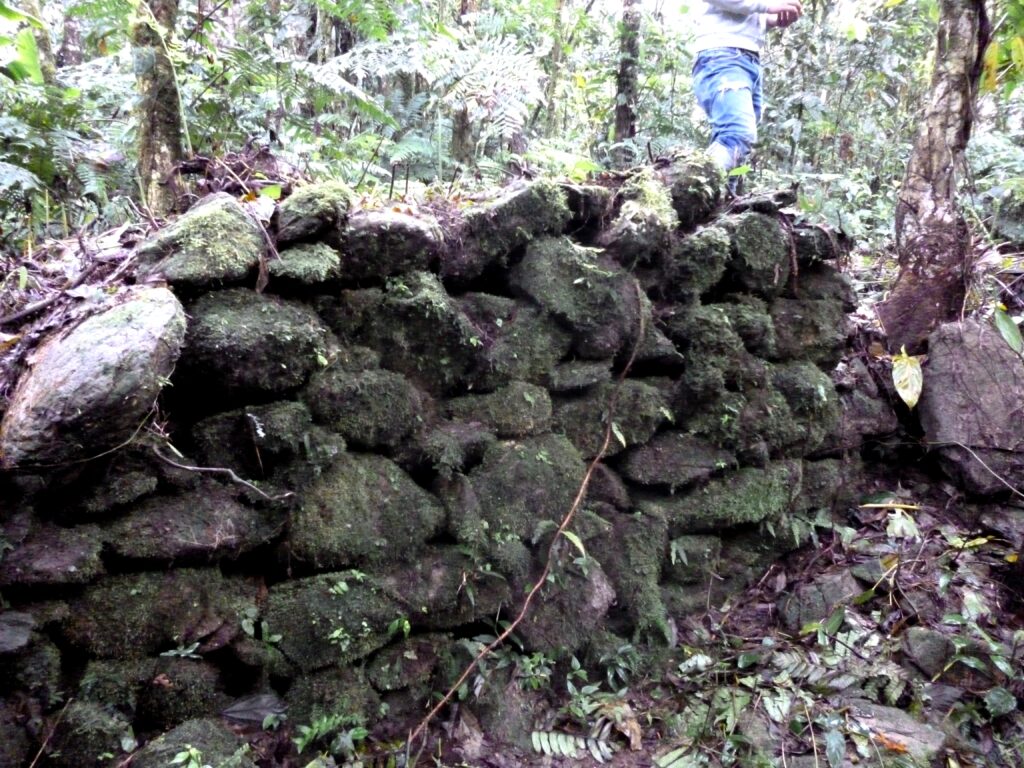
He escorted us down a muddy trail along the mountainside, showing us native stands of achiote trees, wild pineapple, and fiery red devil flower.
And then, he hopped off the trail and into the bush, I thought to urinate. But no, he urged us to follow, using his two machetes to hack and scrape our way through, and the kids also used their machetes as effortlessly as swinging a yo-yo, looking for diversions like stick bugs and blackberries.
He had me kneel down on the ground at one point and put my hand with his into a hole in the ground, asking me to feel what was the lip and interior of a large communal Cañari oven, some 1,500 years old, submerged over time into layers of jungle growth.
We continued upward into an embankment, stepping over fallen trees, in fact, one being so rotten it fell on me, but too light to cause any damage. From there we stopped several times to look at stone walls until it finally dawned on me that these weren’t isolated walls. They were the outlines of an ancient village and its network of streets that we were resurrected for a moment in the light before the jaws of the forest swallowed them up again.
Exiting the darker part of the jungle, I was then led across a high grass meadow up another slope. It wasn’t until I was at the top of the slope that I had that haunting feeling I wasn’t just on top of a grassy hill. One of the kids touched me on the back and turned me around to look down at knee level. Stretching from one side to the other 40 meters each way was a long continuous wall, which then came to 90-degree corners and continued back further into the plateau on one side or into the jungle on the other side.
“Temple”, the child said, practicing on me his very clear English.
Standing on a Cañari temple!
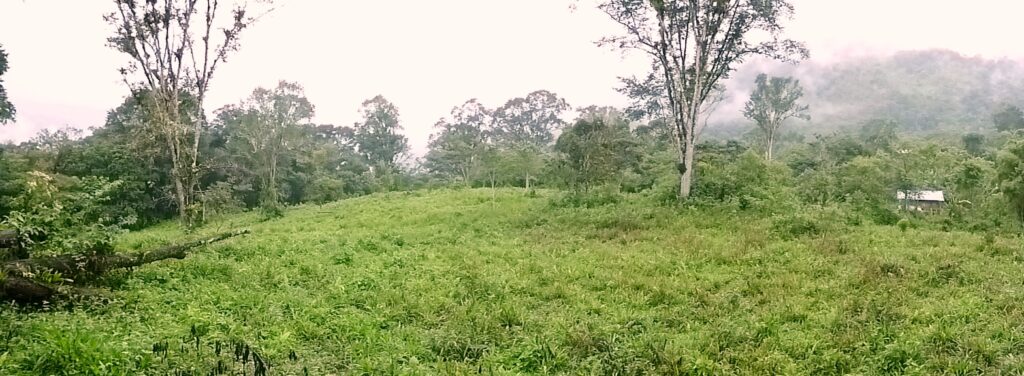
I was standing on the terrace of what were the vestiges of the community’s temple structure, lost to time and with no audience left except the surrounding canopy of silent green. I wondered for a moment what else might be hiding nearby, and the ghosts that lie within.
However, if we were going to make it to El Remanso before sundown, we needed to retreat from the temple mound and go back down the mountain. As a side note, if you choose to come to visit yourself, the ruins of El Cady are also known as the ruins of El Zapas. They are well worth the trip.
Down the mountain, we went to regain our strength on a lunch of local Tilapia, salad, fried plantain, and a pitcher of sugar cane juice. And from there, we went into the facing hillsides from El Cady toward the small village of La Pradera.
I should state at this point that buses do go past the trailheads of El Cady and El Remanso, but you will still need a guide as the drivers may not know where the trailheads are and certainly, the trails by themselves don’t offer any help to the points of interest. Because of my compressed schedule, I chose to go with a personal driver for the day that the guide arranged for, but given the variety of things to do in the area, I would have preferred to stay longer and take the guide with me on the local buses, a solution to stretch both the budget and experiences farther.
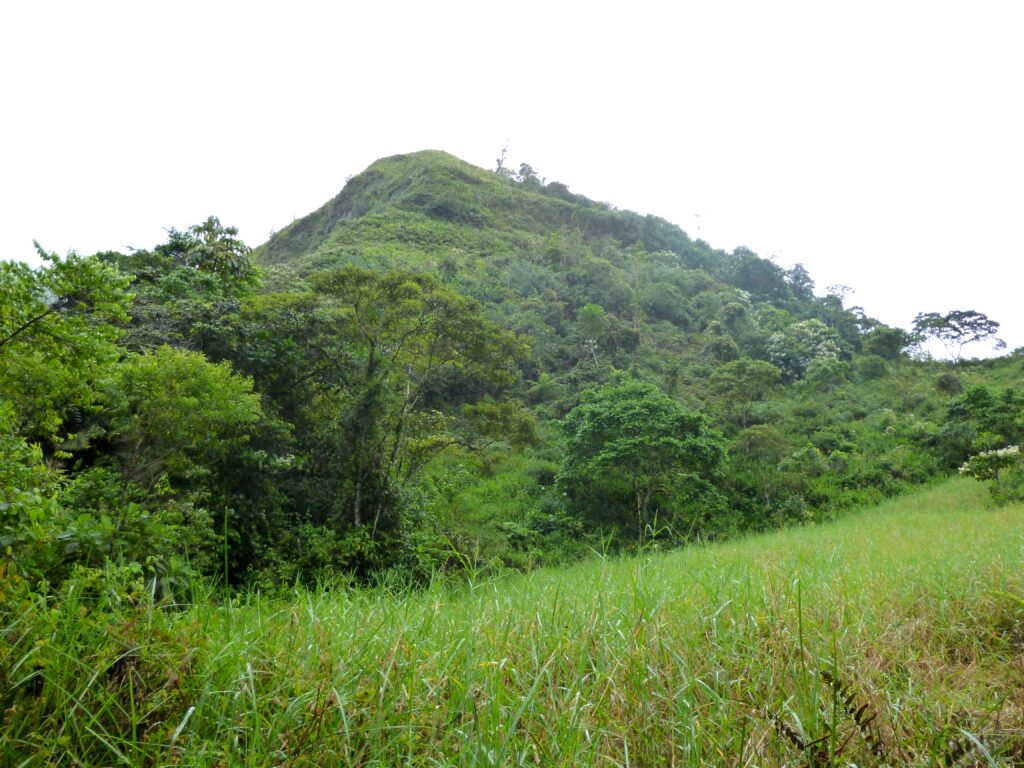
The village of La Pradera is a much shorter trip than to El Cady, and then the El Remanso trailhead is just five minutes farther past La Pradera. There’s a blue sign by the side of the road designating the trailhead, next to which we parked on the shoulder. We took our backpacks, put on our bug spray, and trotted down what felt like a more well-worn path. It made me wonder why my guide took his machete, as this trail is at first a piece of cake.
Pretty quickly we came to the iconic covered wooden bridge associated with the area, El Remanso (translation: the backwaters). The bridge crosses over a rushing torrent that is the confluence of the Sangurima and Aguacate rivers. On the other side of the bridge, we walked around and up past a few river boulders to find another trail, and then from that trail, we cut off into a marshy meadow being grazed by some cows a farmer had left there for the day. I would then pay for not wearing long pants tucked into my hiking boots, as it wasn’t mosquitoes that did me in as much as other types of water bugs, the bites of which I would only feel their itch from later that night.

The nice thing about the historical site of El Remanso is that there isn’t any deep jungle to cover it. It’s a mountain, standing out in front of you under the blue sky. But that mountain is draped in thick, nearly impenetrable saw grass much thicker than the jungle around El Cady. That is where the machete would come in handy, and we drove our way past the cows up into the hillside.
The physical ruins were not as dramatic as El Cady because El Remanso performed a different purpose that didn’t call for walls or villages. It was the Cañari’s mountain of the dead and the condemned.
In this mountain that loomed above us with such eerie quiet are caverns that were used for dual purpose efficiency, to entomb the departed as well as be an inescapable dungeon for those who probably would wish they would die instead!

The grass proved to be so difficult to clear in the swelling rain, that even when hacked to the ground, the edges of the ancient burial mounds could be better felt than seen. Considering the accounted history, touching the tombs was plenty enough for me and gave me chills from ankle to spine.
What provided even more of an unnerving irony was that the El Remanso mountainside is laden with the intoxicating aroma of jasmine trees, that in the rain made you just want to die there and go to heaven (or hell) yourself. What a morbid story that would be!
Wet and soaked, we decided to forego seeing more graves ascending to the top, and leave that for the next adventurer. On the way back, I was shown that El Remanso is a great vantage point for witnessing the junctions of several rivers for which the area is known for, as well as uncovering an array of interesting plants not seen in the jungle on the other side, like this meadow weed that boasts a brilliant electric blue pod pictured here.
Ecuador: a new adventure around the corner
The end of my stay in Gualaquiza was a fortunate one, for that night was the annual parade and night festival celebrating the foundation of Gualaquiza, so the streets were lit up with dancing and marching bands, showcasing a variety of folk costume from the surrounding hillsides, and asaderos (barbeques) grilling generous amounts of chicken, fish, and cuy (guinea pig) to scare all my El Remanso ghosts away.
Going south from Gualaquiza on my return home, it is an appreciably shorter distance to Zamora, which is a great backdoor entrance to Podocarpus National Park. But that venture I would have to leave more another time. To Loja is then only 75 minutes more, where Ecuador’s best coffee and pastries served as a fitting end of an unforgettable jungle journey, and one to which I look forward to returning for more. From Loja, you can also start your journey to Cuenca (Ecuador’s top destination for travelers, ex-pats and world wanderers) or Guayaquil (the largest port city in the region) which can become your gate to Ecuador beaches.
Now don’t worry if you think we ruined the ruins for you by uncovering them. Out there in Gualaquiza, the jungle reclaims them as soon as you leave, and it will take just as much effort to find them again.
